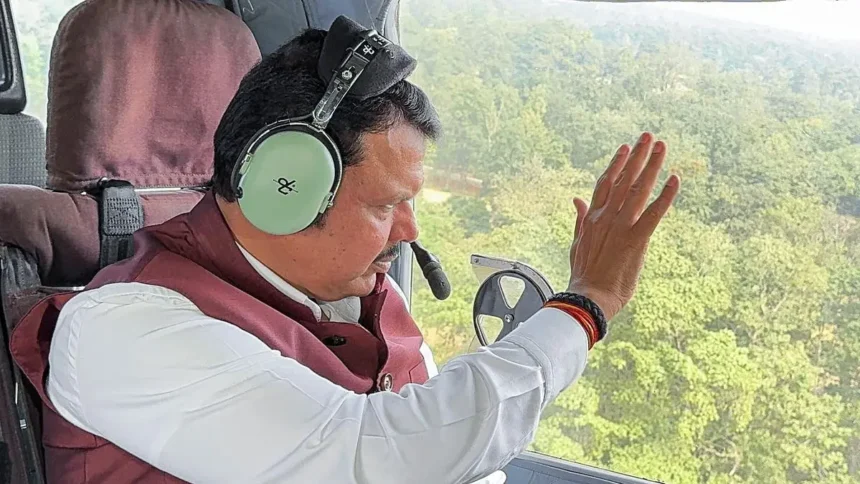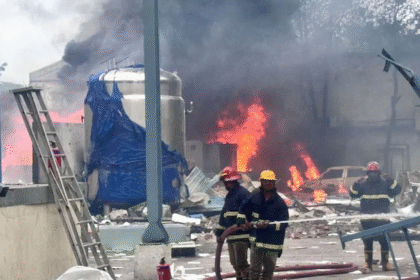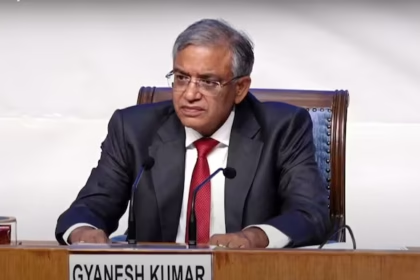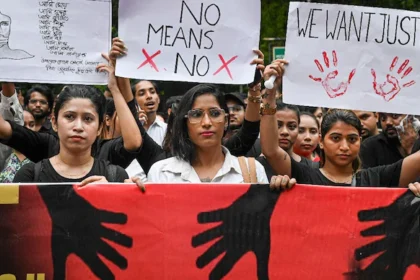Gadchiroli Sees Sharp Rise in Mining as Maoist Activity Declines Under BJP Rule
On June 7, Maharashtra Chief Minister Devendra Fadnavis published an article challenging Congress leader Rahul Gandhi’s assertion that the state assembly elections were rigged.
Interestingly, the opening sentences of this article addressed an entirely different subject. Fadnavis mentioned that on June 6, he toured the Gadchiroli district and became the first Chief Minister to explore the dense forests of Abujhmad.
“I spent the night in Gadchiroli. I have spent at least four nights there so far,” wrote Fadnavis.
It may seem surprising why this article, which was meant as a rejoinder to Rahul Gandhi and pertained to the Congress leader’s allegations about irregularities during the Maharashtra assembly elections, began with a focus on Gadchiroli. It was not a mere coincidence. Fadnavis has a special connection to this district.
It is often speculated what the landscape of the rugged Dandakaranya forest will look like once Naxalites are removed. The answer can be found in the Maoist-affected Gadchiroli district.
In recent years, as the Maoist movement has been weakening and shrinking in this district, the Maharashtra government has intensified efforts to expand mining and industrial activities.
Recently, two news articles were published on the same day in Indian Express. One article reported the death of a prominent Maoist leader during an encounter. The other article discussed the forest clearance approval for an iron ore plant located in Gadchiroli, which necessitated the cutting down of 123,000 trees.
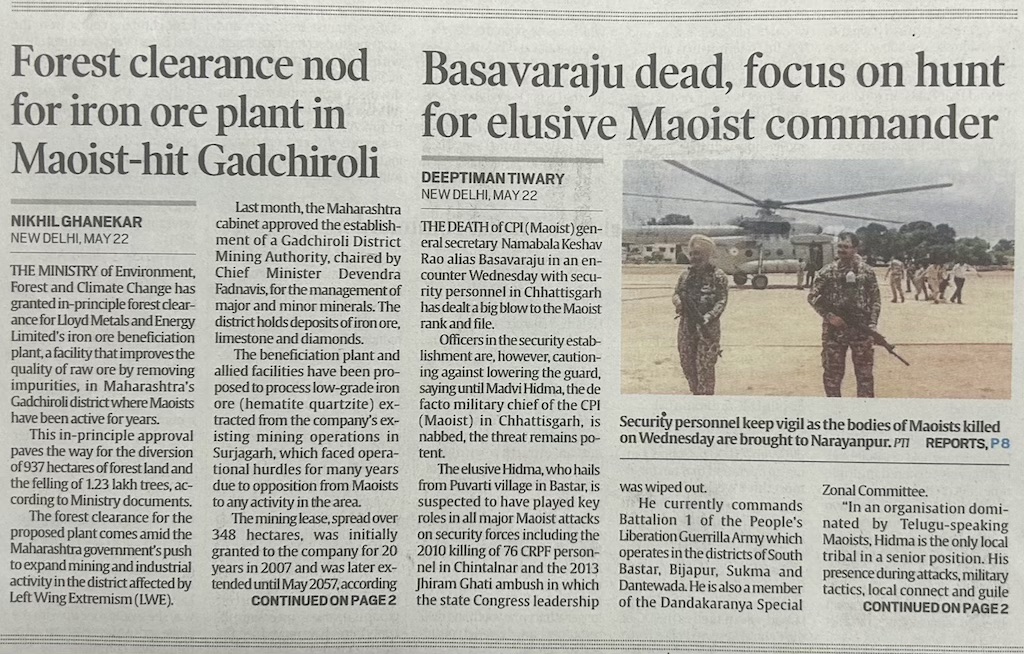
The forest clearance was granted to Lloyds Steel, which has received excessive mining rights over the forest in the last few years.
On May 22, the environment ministry approved the forest clearance to remove over 900 hectares of forest and to fell more than 1,23,000 trees for Lloyds Metals & Energy’s ore-washing plant.
On June 7, the same day that Fadnavis’s article was published, the Union Environment Ministry’s Expert Appraisal Committee (EAC) recommended granting environmental clearance to Lloyds Metals & Energy Ltd, allowing the company to more than double its iron ore production at its Surjagarh mine in Gadchiroli.
This clearance permits the company to raise its annual production capacity from 10 million tonnes to 26 million tonnes. Earlier in 2023, the company received approval to increase its production from 3 million to 10 million tonnes per annum.
It is important to highlight that the project had already been categorised as a ‘violations category case’. Nevertheless, the company obtained approval for expansion despite having been convicted of environmental violations.
In December 2022, the Maharashtra Pollution Control Board filed a complaint in a Gadchiroli court under sections 15, 16 and 19 of the Environment Protection Act, 1986, indicating that the mine continued to operate beyond the five-year environmental clearance period that expired in 2007.
As per the ministry and court documents, the company officials acknowledged their wrongdoing and were found guilty. Consequently, the National Green Tribunal levied a penalty of Rs 5.48 crore on the company.
Marred by controversies
Since its inception, the project has been marred by controversies as the mining site in Surajgarh falls under the sensitive Bhamragarh Reserve Forest. Lloyds Metals and Energy Limited is the sole mining entity operating an iron mine in the Gadchiroli district. The company obtained the lease for the Surjagarh mine in 2007 for a duration of 20 years, which was subsequently extended until 2057.
Devendra Fadnavis’s interest in Gadchiroli
When it comes to development, the Gadchiroli district, predominantly inhabited by tribal communities, is regarded as significantly backward. However, it is a resource-rich area abundant in minerals and forest reserves, situated adjacent to the Abujhmad hills of Chhattisgarh.
Surjagarh hill is estimated to contain a total reserve of 857 metric tonnes of high-grade iron ore, which comprises 156 metric tonnes of hematite and 701 metric tonnes of banded hematite quartz (BHQ).
Chief Minister Fadnavis has appointed himself as the guardian minister for Gadchiroli, with his cabinet associate Ashish Jaiswal serving as the co-guardian minister. In this manner, he has assumed complete control over the district.
Fadnavis started the year 2025 in Gadchiroli and also became the first Chief Minister of Maharashtra to spend the night in the district. During this visit, he also inaugurated several units of Lloyds Metal Company within the district.
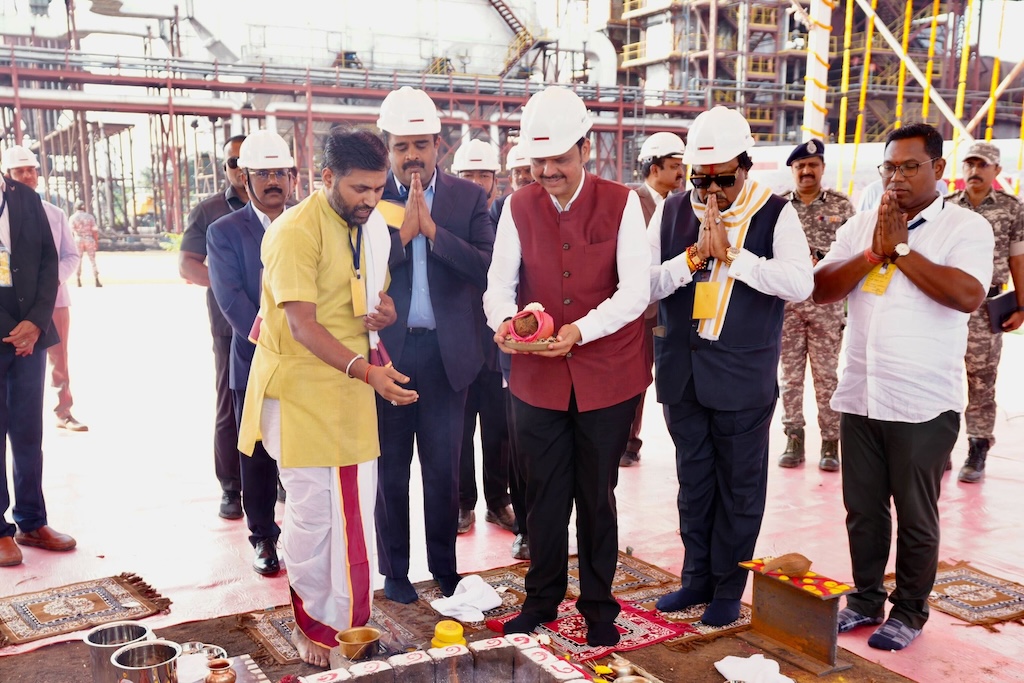
As of today, investments exceeding Rs 60,000 crore are currently in the pipeline for Gadchiroli. In addition, the government intends to construct an airport and extend the Nagpur-Mumbai expressway to Gadchiroli, which will be called the ‘Samriddhi Mahamarg’.
On June 19, Fadnavis ordered an immediate survey of the obstacle limitation surface for the proposed Gadchiroli airport, along with extensive land acquisition for other projects in the region.
The first memorandum of association that Fadnavis signed during the annual World Economic Forum (WEF) held in Davos, Switzerland, in February this year was specifically for investments in Gadchiroli.
CM Fadnavis also inaugurated several significant infrastructure and industrial projects in Gadchiroli on Tuesday (July 22, 2025). This includes the first phase of the iron ore grinding plant, which has a capacity of 50 lakh tonnes per annum (MTPA) at Hedri, as well as a slurry pipeline project with a capacity of 10 MTPA.
In addition to this, Konsari will feature a 4.5 MTPA capacity integrated steel plant, a 100-bed multispecialty hospital, a school, and Lloyds township, which will span over 116 acres in the Naxal-affected area.
Investments made by the Jindal group in the region
Jindal’s JSW Group has invested approximately Rs. 3 lakh crore across various projects in different parts of the state, including the Gadchiroli district. There are claims that this investment aims to establish India’s second steel city, following Jamshedpur, in this district.
During the announcement of the investment, Fadnavis stated, “The signing of the MoU with JSW Steel, a company that has diversified investments in crucial sectors such as steel, solar energy, automotive, and cement in Maharashtra, represents a significant milestone in our objective to develop Gadchiroli as India’s ‘Steel City.’”
At the Gadchiroli District Investment Summit held on April 11, 2025, 66 MSMEs signed MoUs totaling Rs 493.4 crore.
In addition, the Maharashtra Industrial Development Corporation (MIDC) has initiated the process of acquiring approximately 3,500 acres of land for the JSW Group’s steel project in Gadchiroli. Land has been earmarked for acquisition in the Wadsa taluka of the Maoist- affected district. This is anticipated to be the largest land acquisition in terms of area within the district, as the state intends to develop it into a steel hub.
Bill to expedite mining approvals
On June 30, the government of Maharashtra presented a bill in the assembly aimed at establishing a unified authority to accelerate mining approvals and foster mineral-based industries in the Gadchiroli. CM Devendra Fadnavis is designated to serve as the chairman of the Gadchiroli District Mining Authority (GDMA).
As stipulated by this bill, the authority will possess the ability to circumvent all current laws, and no court shall have the jurisdiction to initiate any legal action or proceedings against any of its actions or directives.
On July 7, this bill received approval from the Maharashtra Legislative Council. On the same day, Maharashtra Industry Minister Uday Samant declared an investment of Rs 1 lakh crore to transform Gadchiroli into a hub for steel production.
‘Companies lining up for mines…’
The influx of companies has provoked anger among local tribal communities. Tribal activist Lalsu Nugoti mentioned that numerous companies are gearing up to set up mines in Gadchiroli. In the near future, there is a proposal to initiate mining operations at a total of 25 locations throughout the district.
Additionally, mining is being expanded on the opposite side of the Surjagarh hill range, where six blocks have been allocated to various companies. Among these are Jindal’s JSW Group and the Raipur-based Natural Resources Energy Company. There is also a proposal to commence iron mining in the Jendepad hill of Korchi tehsil and Babalai hill of Bhamragarh tehsil.
In addition to iron ore, the Adani Group’s subsidiary, Ambuja Cements, has received authorisation for limestone mining in the Dewalmari Katepalli region of Gadchiroli. This area spans approximately 538 hectares and is estimated to contain around 150 million tonnes of limestone.
Devasai Atla, president of the Mohgaon Gram Sabha, stated that there are ongoing efforts to extract bauxite from a 1200-hectare area in Chamorshi taluka. A plan is in place to lease this area for 90 years through a tribal company.
“As this region is classified under the fifth schedule area, no external company can acquire land here. As a result, an external company will establish a business under the name of a tribal individual, and after initially transferring the land to that individual, will subsequently lease it from him,” Devsai told The Wire.
He also noted that some individuals had approached him, requesting that he get the land transferred to his company, ‘Adim Paramparik Sanstha.’ In exchange, they offered him a sum of money and assured him that they would facilitate the transfer of the land to his company. After nine years, the land would be taken on lease from him for a duration of 90 years to carry out mining.
Opposition to mining
Local tribal communities have been resisting mining activities in the Surjagarh region. As a result, numerous conflicts have arisen. Villagers allege that the companies deceived them, unlawfully seized their land, and began mining operations.
Lloyds Metals and Energy Limited received approval to carry out mining in Surjagarh in 2007. However, in 2008, despite obtaining a mining license for an area of 340.09 hectares, operations were halted for several years due to resistance from Maoists and tribal groups, as well as complications regarding forest and land rights. At one point, Maoists set fire to the company’s vehicles and assaulted employees. In 2013, the company’s vice-president, Jaspal Dhillon, along with two others, was allegedly killed by suspected Maoists.
Subsequently, Fadnavis, who at the time was also the Chief Minister, appealed to the Union home minister in August 2015 to enhance the deployment of paramilitary forces in the region to facilitate uninterrupted mining activities.
Following this, the company made attempts to resume mining operations. On December 5, 2016, representatives from tribal leaders, local social organisations, and political figures from 70 villages convened in Surjagarh and adopted a resolution to halt mining, demanding that the government revoke all current and proposed mining leases.
They also passed resolutions advocating for the implementation of the Forest Rights Act, 2006, and the Panchayat Extension to Scheduled Areas (PESA) Act to safeguard the livelihoods of the people.
But despite protests from local tribal communities, the excavation activities continued unabated. On December 24, 2016, Maoists attacked the Surjagarh mine and set fire to dozens of trucks and earthmovers belonging to Lloyds Metals and Energy Limited. Approximately 80 vehicles were destroyed in the incident, resulting in an estimated loss of Rs 13 crore for the company.
Following the incident, heavy police presence was established in the area.
“Villagers who opposed the mining operations faced harassment and arrests by both police and paramilitary forces,” said Lalsu.
In 2017, residents from around 70 villages collectively passed a resolution against the government’s issuance of mining licences, asserting that due process has not been followed.
Locals contend that the land acquisition process mandated by the Forest Rights Act (2006) and the requirement for their consent under the Panchayat (Extension to Scheduled Areas) Act, 1996 were not initiated.
They claim that mining activities are being conducted in violation of excavation laws, environmental regulations and PESA laws.
Vinod Mandavi, an activist with the Adivasi Vikas Parishad of Potegaon, accused the Gadchiroli collector of fabricating gram sabha documents in 2010, to falsely demonstrate public consent for mining. Allegations suggest that such counterfeit gram sabha documents were produced with the assistance of village gram sevaks in Damakondawahi, located in the Bande area of the Etapalli block.
In 2023, the police forcefully shut down the peaceful dharna organized by tribal members from over 70 villages, which had persisted for about eight months in opposition to the Surjagarh mining.
Lalsu Nugoti claimed that the police, local administration and the mining company are constantly intimaditing the community and filing baseless cases against them.
The protest against the mine in Todgatta lasted for 255 days in 2023, marking it as one of the longest protests led by tribal communities in the history of Gadchiroli.
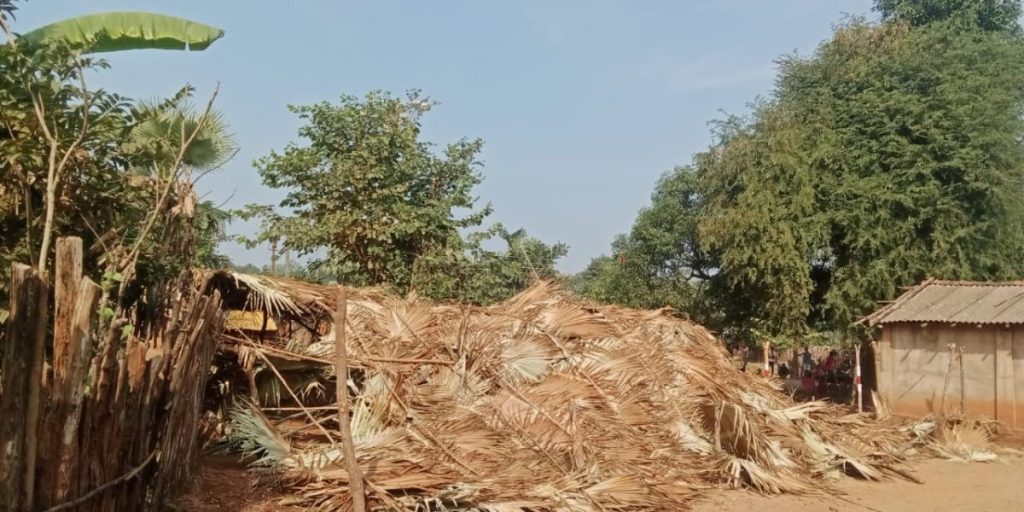
Lalsu claimed that the government brutally suppressed the peaceful protest with police force. People were forcibly removed from the area, huts were vandalised, and 21 individuals – including women – were detained. They faced false charges and were held in Chandrapur jail for 17-18 days before being released on bail.
Vinod Mandavi mentioned that a police post has been established every five kilometers in that region. Anyone who speaks out is branded a Maoist. He stated, ‘I have also been detained numerous times.’
Residents of the area also informed The Wire that individuals are now reluctant to participate in protests against the mining operations due to harassment from police and paramilitary forces. The police file cases against them, accusing them of being Maoists or invoking stringent laws such as the Unlawful Activities (Prevention) Act (UAPA).
Displacement: The status of tribal lands
Lalsu indicated that currently, no village has been displaced due to mining activities in this region, but the likelihood of displacement will significantly increase in the future. As mining operations expand, people’s lands will begin to be usurped, he said. Lloyds Company has commenced land acquisition from residents in certain villages in the area.
Lalsu noted that Lloyds Company constructed a school, hospital, and training centre in Hedri village, for which tribal lands were seized. Therefore, as mining activities grow, tribal lands are being seized for various other purposes as well.
Lalsu said that the company has obtained a mining license from the government for 340.09 hectares of land. However, it is acquiring additional land in that region under the guise of other activities.
In addition, the company has secured a significant amount of land for the purpose of gathering raw materials in Etapalli and Madigudem. Substantial tribal land has also been acquired around Alapalli and Kamancheru for the purposes of parking and dumping soil and stones, among other materials extracted alongside iron ore.
As a result, tribal land is being appropriated and transferred to companies.
Also Read: Infosys Q1 Results: Net Profit Rises 9% YoY to ₹6,921 Crore, Revenue Grows 8%


